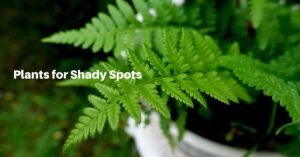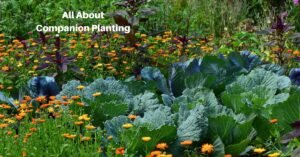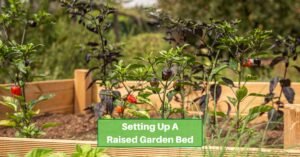In recent years, the decline of bee and butterfly populations has become a growing concern for ecologists, gardeners, and anyone concerned about the health of our planet’s ecosystems. These pollinators play a crucial role in fertilizing many plants, including those vital for human food production.
Fortunately, gardeners can significantly support these essential creatures by creating inviting habitats in their backyards. This article explores how you can transform your garden into a haven for butterflies and bees, fostering nature’s beauty while contributing to preserving these species.
Understanding Butterflies and Bees
Butterflies and bees are drawn to gardens that satisfy their basic needs: food, water, shelter, and breeding grounds.
While butterflies primarily search for nectar, bees require both nectar and pollen. Understanding the lifecycle of these pollinators, particularly butterflies, can enhance your ability to effectively cater to their needs.
For example, butterflies undergo a complete metamorphosis from egg to caterpillar, pupa, and adult. Each stage has specific requirements, from host plants for caterpillars to feed on to nectar-rich flowers for adult butterflies.
Best Plants for Attracting Butterflies and Bees
The foundation of a pollinator-friendly garden is the selection of plants that attract and nourish these creatures. Native plants are particularly beneficial as they’ve co-evolved with local wildlife and are often more resistant to pests and diseases than their non-native counterparts. Here are some stellar plant choices known for their appeal to butterflies and bees:
- Milkweed is essential for monarch butterflies, as it is the only plant on which they lay their eggs and which feeds their caterpillars.
- Lavender: With its rich nectar, lavender attracts a wide variety of bees and butterflies.
- Coneflower (Echinacea): Its large, flat flowers are perfect landing pads for butterflies, and its seeds attract birds in the fall and winter.
- Sunflower: Bees are drawn to sunflowers for their nectar and pollen, and the seeds attract a variety of birds.
Incorporating a diverse selection of plants that bloom at different times throughout the growing season ensures a continuous food source, making your garden attractive to pollinators from spring through fall.
Creating a Butterfly and Bee-Friendly Habitat
Designing your garden with butterflies and bees in mind goes beyond just plant selection. Consider the following tips to create a habitat that welcomes these pollinators:
- Shelter: Dense shrubbery or tall grasses can provide refuge from predators and harsh weather conditions.
- Sunlight: Butterflies and bees are most active in sunny, warm environments. Positioning your garden in a sunny spot with minimal wind can encourage their visits.
- Water Sources: A shallow bird bath or dishes filled with pebbles and water can serve as drinking spots for bees and butterflies.
Creating a garden that caters to the needs of butterflies and bees is a rewarding endeavor that enhances the beauty of your outdoor space and contributes to the conservation of these vital pollinators.
Avoiding Common Mistakes
One of the critical factors in creating a butterfly and bee-friendly garden is understanding what to avoid. Pesticides and insecticides, while often used to keep gardens free of pests, can have devastating effects on beneficial pollinators. Even organic or natural pesticides can harm bees and butterflies if not used judiciously.
Instead of reaching for chemical solutions, consider integrated pest management practices such as encouraging natural predator species, using physical barriers, and selecting disease-resistant plant varieties. Remember, a healthy garden embraces a natural balance, where occasional pest presence is part of the ecosystem.
Encouraging Biodiversity in Your Garden
Biodiversity is not just a buzzword; it’s a critical component of any healthy ecosystem, including your garden. By cultivating a variety of plants, you provide a range of habitats and food sources, supporting a wider range of pollinators and beneficial insects. This diversity can help stabilize your garden’s ecosystem, reducing the need for chemical interventions and creating a more resilient and vibrant outdoor space.
Here are a few tips to increase biodiversity in your garden:
- Layer your plantings: Incorporate plants of varying heights, from ground covers to shrubs and trees, to create a multi-dimensional habitat.
- Include native plants: Native species are well-adapted to your local climate and soil, requiring less maintenance and providing optimal support for local wildlife.
- Plant in clusters: Grouping plants together can make it easier for pollinators to find the resources they need, increasing the efficiency of their foraging.
Creating a Balanced Ecosystem
A balanced garden ecosystem supports a variety of life forms, not just the pollinators we aim to attract. In addition to butterflies and bees, consider providing for birds, bats, and other beneficial creatures that contribute to the health of your garden. Birdhouses, bat boxes, and leaving dead trees in place can provide nesting and roosting spots for these allies. Providing various food, shelter, and water sources ensures that your garden is a sanctuary for a broad spectrum of life, further enhancing its beauty and health.
Attracting butterflies and bees to your garden is an enriching endeavor that benefits both the environment and the gardener. By understanding the needs of these pollinators, choosing the right plants, and avoiding harmful practices, you can create a vibrant and thriving garden ecosystem. Embracing biodiversity and fostering a balanced environment supports the conservation of bees and butterflies and brings the joy of a lively, flourishing garden to your doorstep.
As you embark on this journey to attract pollinators, remember that every garden can make a difference, no matter its size. Whether transforming a sprawling backyard or nurturing a modest balcony garden, your efforts contribute to a more significant movement of environmental stewardship and conservation. Let your garden be a testament to the beauty of nature in harmony, buzzing with life and color, and enjoy the rewards of a world enriched by butterflies and bees.









